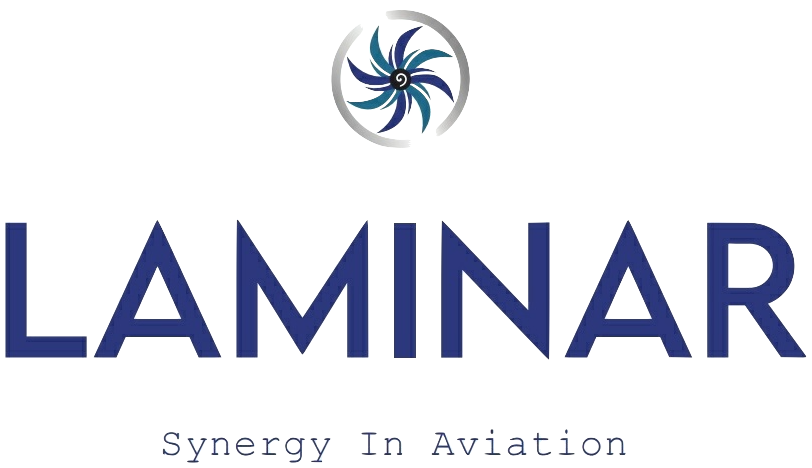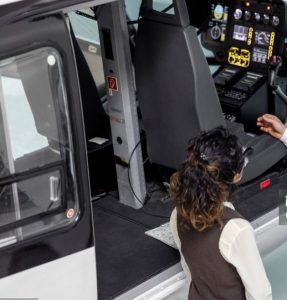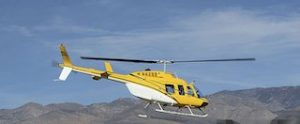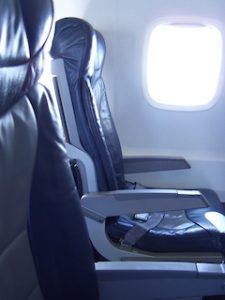7 Differences Between APS Course And JOC
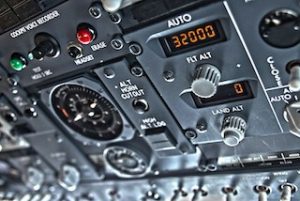 In the aviation industry, pilots undergo various specialized training courses to prepare for different stages of their careers. Two essential courses that aspiring airline pilots often consider are the Airline Pilot Standard (APS) course and the Jet Orientation Course (JOC). Both courses play a crucial role in a pilot’s transition to commercial airline operations, but they serve different purposes and focus on different aspects of flight training. This article provides an in-depth exploration of the main differences between the APS and JOC courses, highlighting their unique features, objectives, and benefits.
In the aviation industry, pilots undergo various specialized training courses to prepare for different stages of their careers. Two essential courses that aspiring airline pilots often consider are the Airline Pilot Standard (APS) course and the Jet Orientation Course (JOC). Both courses play a crucial role in a pilot’s transition to commercial airline operations, but they serve different purposes and focus on different aspects of flight training. This article provides an in-depth exploration of the main differences between the APS and JOC courses, highlighting their unique features, objectives, and benefits.
APS course
The Airline Pilot Standard (APS) course is a comprehensive training program designed to prepare pilots for the rigorous demands of airline operations. It goes beyond basic flight training by focusing on advanced topics such as Crew Resource Management (CRM), Standard Operating Procedures (SOPs), and the handling of complex, multi-crew jet aircraft. The APS course is typically integrated with the Multi-Crew Cooperation (MCC) training and is recognised as a critical step for pilots aiming to secure positions with commercial airlines.
Components of the APS course
-
- Crew Resource Management (CRM): Emphasis on effective communication, teamwork, and decision-making skills within a multi-crew environment
- Advanced flight theory: In-depth understanding of jet aircraft systems, high-speed aerodynamics, and performance characteristics
- Standard Operating Procedures (SOPs): Familiarisation with airline-specific procedures and protocols to ensure adherence to industry standards
- Emergency and abnormal procedures: Training in handling in-flight emergencies and abnormal situations
- International aviation regulations: Overview of international flight regulations, airspace classifications, and navigation requirements.
JOC
The Jet Orientation Course (JOC) is specifically designed to bridge the gap between propeller-driven aircraft training and the advanced requirements of jet aircraft operations. The course focuses on the differences in performance, systems, and handling characteristics between jets and propeller-driven aircraft. The JOC prepares pilots for the high-speed environment of jet operations, providing them with the essential skills and knowledge needed to transition smoothly to flying jet aircraft.
Components of the JOC
-
- Jet aerodynamics: Understanding the principles of high-speed flight, including the effects of compressibility, shock waves, and transonic flight.
- Engine performance: Knowledge of jet engine operation, performance characteristics, and fuel management.
- Advanced flight planning: Techniques for efficient and effective flight planning in a jet environment.
- Cockpit management: Training in advanced cockpit management, including the use of modern avionics and automation systems.
- Simulated flight scenarios: Practice in realistic flight scenarios, including normal operations, abnormal situations, and emergencies.
1) Differences in objectives
APS course objectives
The primary objective of the APS course is to prepare pilots for the multifaceted demands of airline operations. This includes mastering the advanced CRM skills necessary for effective teamwork in a multi-crew cockpit, understanding and adhering to SOPs, and handling the complexities of jet aircraft. The APS course aims to ensure that pilots are fully prepared to integrate into airline operations and contribute to the safe and efficient operation of commercial flights.
JOC objectives
The main objective of the JOC is to provide pilots with the foundational skills and knowledge needed to transition from propeller-driven aircraft to jet aircraft. This includes understanding the unique handling characteristics of jets, mastering high-speed flight dynamics, and becoming proficient in advanced cockpit management. The JOC aims to equip pilots with the confidence and competence to handle jet aircraft safely and efficiently.
2) Differences in curriculum
APS course curriculum
The APS course curriculum is comprehensive and covers a wide range of topics essential for advanced airline operations. Key areas of focus include:
-
-
- Crew Resource Management (CRM): Training in effective communication, leadership, and decision-making within a multi-crew environment.
- Advanced flight theory: Detailed study of jet aircraft systems, high-speed aerodynamics, and performance characteristics.
- Standard Operating Procedures (SOPs): Instruction on airline-specific procedures and protocols.
- Emergency and abnormal procedures: Training in handling in-flight emergencies and abnormal situations.
- International aviation regulations: Overview of international flight regulations and navigation requirements.
-
JOC curriculum
The JOC curriculum is more focused on the specific challenges of transitioning to jet aircraft. Key areas of focus include:
-
-
- Jet aerodynamics: Principles of high-speed flight, including compressibility effects, shock waves, and transonic flight.
- Engine performance: Understanding jet engine operation and performance characteristics.
- Advanced flight planning: Techniques for effective flight planning in a jet environment.
- Cockpit management: Training in the use of modern avionics and automation systems.
- Simulated flight scenarios: Practice in realistic flight scenarios, including normal operations, abnormal situations, and emergencies.
-
3) Differences in training methods
APS Course training methods
The APS course employs a combination of theoretical instruction and practical training. The theoretical component includes classroom lectures, computer-based training, and self-study materials. The practical component involves extensive use of advanced flight simulators, allowing pilots to practice CRM techniques, SOP adherence, and emergency procedures in a realistic, controlled environment. The APS course also includes debriefing sessions where pilots receive detailed feedback on their performance.
JOC training methods
The JOC also combines theoretical and practical training, but with a greater emphasis on hands-on practice in flight simulators. The theoretical component covers essential topics such as jet aerodynamics, engine performance, and advanced flight planning. The practical component involves extensive simulator sessions where pilots practice jet handling techniques, high-speed flight, and emergency procedures. The JOC includes debriefing sessions to provide pilots with feedback and areas for improvement.
4) Differences in target audience
APS course target audience
The APS course is primarily aimed at pilots who have completed their Commercial Pilot License (CPL) with Instrument Rating (IR) and are preparing to transition to airline operations. It is also suitable for pilots seeking to enhance their qualifications and improve their employability with major airlines. The APS course is particularly beneficial for pilots aiming to advance their careers within regional airlines or transition to major or international airlines.
JOC target audience
The JOC is designed for pilots who have completed their basic flight training and are preparing to transition to jet aircraft. This includes pilots with general aviation experience, military pilots transitioning to civil aviation, and corporate or business aviation pilots moving to larger jets. The JOC is also beneficial for pilots seeking to enhance their jet handling skills and improve their confidence in operating jet aircraft.
5) Differences in course duration
APS course duration
The APS course is typically longer in duration compared to the JOC, reflecting its comprehensive curriculum and advanced training objectives. The exact duration of the APS course can vary depending on the training provider and the specific program, but it generally ranges from several weeks to a few months. The course includes both theoretical and practical components, with a significant portion of time dedicated to advanced CRM training, SOP adherence, and emergency procedures.
JOC duration
The JOC is generally shorter in duration compared to the APS course, focusing on the specific skills and knowledge needed for transitioning to jet aircraft. The duration of the JOC can vary, but it typically ranges from a few days to a couple of weeks. The course includes both theoretical instruction and practical simulator sessions, with a strong emphasis on hands-on practice in jet handling and high-speed flight dynamics.
6) Differences in certification and recognition
APS course certification
Upon successful completion of the APS course, pilots receive a certification that is recognized by airlines and regulatory authorities. The APS certification is often viewed as a significant qualification that demonstrates a pilot’s readiness for advanced airline operations. It is a valuable credential that can enhance a pilot’s employability and career prospects.
JOC certification
The JOC also provides a certification upon successful completion, indicating that the pilot has received training in jet handling and high-speed flight dynamics. While the JOC certification is an important qualification, it is generally viewed as a foundational step in the transition to jet aircraft, rather than an advanced qualification like the APS certification. However, it is still a valuable credential that can enhance a pilot’s confidence and competence in jet operations.
7) Differences in career impact
APS course career impact
The APS course has a significant impact on a pilot’s career, particularly for those seeking to join major airlines or advance to higher positions within regional airlines. The comprehensive training provided by the APS course ensures that pilots are fully prepared for the demands of airline operations, making them more attractive candidates to potential employers. The APS certification is often a prerequisite for securing positions with reputable airlines, and it can be a deciding factor in achieving career progression.
JOC career impact
The JOC also has a positive impact on a pilot’s career, particularly for those transitioning to jet aircraft or seeking to enhance their jet handling skills. The training provided by the JOC ensures that pilots are comfortable and proficient in operating jets, improving their confidence and competence in jet operations. While the JOC certification is not as advanced as the APS certification, it is still a valuable credential that can enhance a pilot’s employability and career prospects.
Choose your course
The Airline Pilot Standard (APS) course and the Jet Orientation Course (JOC) are both essential training programs for pilots seeking to advance their careers in aviation. While they share some similarities, they serve different purposes and focus on different aspects of flight training. The APS course is a comprehensive program designed to prepare pilots for the rigorous demands of airline operations, with a strong emphasis on advanced CRM skills, SOP adherence, and emergency procedures. The JOC, on the other hand, is a specialized course focused on the specific skills and knowledge needed for transitioning to jet aircraft, including jet aerodynamics, engine performance, and high-speed flight dynamics.
Pilots should carefully consider their career goals and current qualifications when deciding which course to undertake. The APS course is particularly beneficial for pilots seeking to join major airlines or advance to higher positions within regional airlines, while the JOC is ideal for pilots transitioning to jet aircraft or seeking to enhance their jet handling skills. Both courses provide valuable training that can enhance a pilot’s confidence, competence, and career prospects, making them essential steps in the journey to becoming a successful airline pilot.
